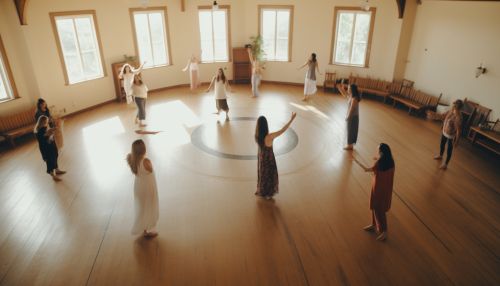Dance Therapy
Overview
Dance therapy, also known as Dance Movement Therapy (DMT), is a type of therapy that uses movement to promote the emotional, social, cognitive, and physical integration of the individual. It is based on the premise that the body, mind, and spirit are interconnected and that changes in one aspect can affect the others. Dance therapy is used in a wide range of clinical and educational settings, and is recognized as an effective treatment for individuals with developmental, medical, social, physical, and psychological impairments.


History
The roots of dance therapy can be traced back to the early 20th century, when pioneers like Laban, Delsarte, and Jaques-Dalcroze began to study the relationship between movement and expression. However, it was not until the 1940s that dance therapy began to emerge as a distinct profession, largely due to the work of Marian Chace and Mary Whitehouse. Chace, a former dancer, began to use dance as a therapeutic tool with patients at St. Elizabeths Hospital in Washington, D.C., while Whitehouse, a dance teacher and analyst, developed an approach known as "movement in depth," which combined dance and analytical psychology.
Theoretical Foundations
Dance therapy is grounded in the principles of psychodynamic theory, humanistic psychology, and developmental psychology. It also draws from theories of attachment, body-mind dualism, and nonverbal communication. The psychodynamic perspective views dance therapy as a means of accessing unconscious material, while the humanistic perspective emphasizes the individual's capacity for self-actualization and growth. The developmental perspective, on the other hand, focuses on how movement patterns and abilities evolve over time, and how these changes can be used to facilitate therapeutic change.
Methodology
In a typical dance therapy session, the therapist uses movement and dance to help the client explore their emotions and experiences. This can involve a range of activities, from structured movement exercises to free-form improvisation. The therapist may also use verbal processing to help the client make sense of their experiences and integrate them into their broader life context. The goal of dance therapy is not to teach dance or to improve dance technique, but rather to use dance as a medium for personal growth and healing.
Applications
Dance therapy can be used with individuals of all ages and abilities, and in a variety of settings. It has been used to treat a wide range of conditions, including Autism Spectrum Disorder (ASD), Post Traumatic Stress Disorder (PTSD), depression, anxiety, and eating disorders. It can also be used to enhance cognitive function, improve physical health, and promote emotional well-being.
Research and Evidence
While dance therapy is a relatively young field, there is a growing body of research supporting its effectiveness. Studies have shown that dance therapy can reduce symptoms of depression and anxiety, improve body image, enhance social skills, and promote overall mental health. However, more research is needed to fully understand the mechanisms underlying these effects and to establish best practices for the field.
Training and Certification
Becoming a dance therapist requires a master's degree in dance therapy or a related field, as well as supervised clinical experience. In the United States, the American Dance Therapy Association (ADTA) is the primary organization responsible for accrediting dance therapy programs and certifying dance therapists.
